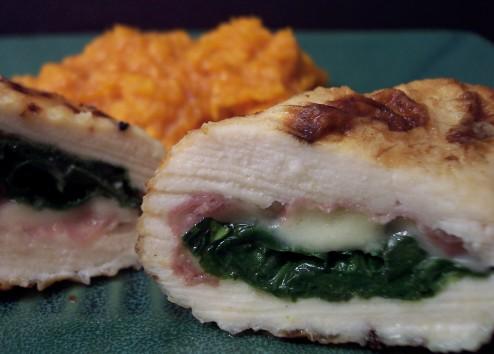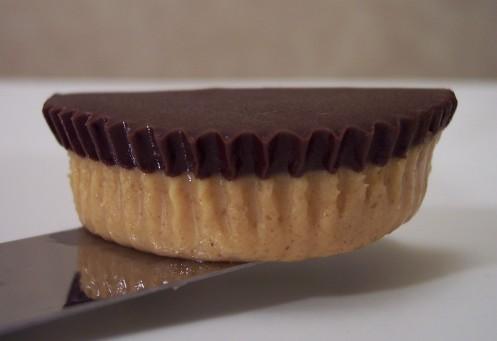Seasoned lightly with salt and pepper, the cauliflower roasts in a moderately hot oven until tender and it begins to have a golden hue as the edges begin to caramelize. Meanwhile, a single tablespoon of butter is left to melt in a small skillet until a nutty aroma fills the kitchen and the liquid gold begins to darken. It may not seem like a lot, but there is enough butter to add a glistening coat to the cauliflower to make it even more tempting. If you've never roasted a vegetable like this before, you will be excited by the deep flavor it has - but I thought that the sharpness from a few fresh grates of Parmesan cheese would have brought this recipe to a new height as in previous recipes. While this colored cauliflower really had no difference in taste, it certainly creates conversation at the dinner table!
 To go with the cauliflower tonight, we made a filling pasta dish that has a uniquely flavored sauce. In this recipe, Farfalle with Creamy Leek Sauce, the sauce is reminiscent of pesto, except it has no nuts and the cheese is added later on. A slew of thinly sliced leeks are sautéed in a good amount of olive oil until they begin to get a tinge of brown on them to start off the sauce. Chicken broth along with lemon juice, lemon zest and parsley are added to the leeks to freshen and zap the sauce with a bright flavor - the mixture is then pureed until smooth. If you know your time will be limited, you could even do this part the day before and just keep it stored, covered, in the refrigerator overnight. When you boil the pasta, be sure to under-cook it by about 3 minutes or so - once you drain the water away, the pasta and the creamy sauce are added back into the pot to finish cooking.
To go with the cauliflower tonight, we made a filling pasta dish that has a uniquely flavored sauce. In this recipe, Farfalle with Creamy Leek Sauce, the sauce is reminiscent of pesto, except it has no nuts and the cheese is added later on. A slew of thinly sliced leeks are sautéed in a good amount of olive oil until they begin to get a tinge of brown on them to start off the sauce. Chicken broth along with lemon juice, lemon zest and parsley are added to the leeks to freshen and zap the sauce with a bright flavor - the mixture is then pureed until smooth. If you know your time will be limited, you could even do this part the day before and just keep it stored, covered, in the refrigerator overnight. When you boil the pasta, be sure to under-cook it by about 3 minutes or so - once you drain the water away, the pasta and the creamy sauce are added back into the pot to finish cooking.To thin out the sauce, you will need about a half a cup of the pasta water. I've started taking this out before I drain the pasta - I've one too many times drained the pasta to instantly realize I needed a portion of that starchy water as it dwindled down the drain! The reason you don't want to fully cook the pasta in the beginning is so the pasta and sauce can thoroughly marry and become one with each other - the pasta will more readily absorb the sauce and still have a bite to it. At the end, a couple ounces of Parmigiano-Reggiano is added before serving to lend a creamy edge to the sauce - be sure to pass around a generous mound of the sharp cheese so your guests can add more if desired.























No comments:
Post a Comment